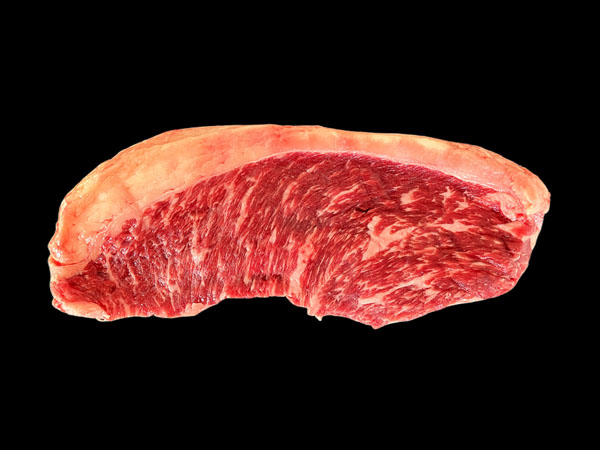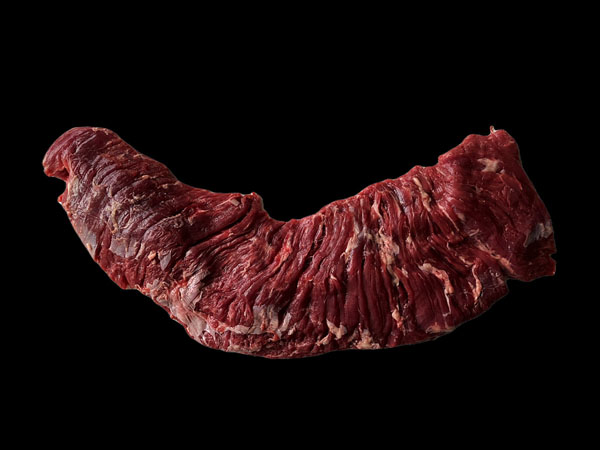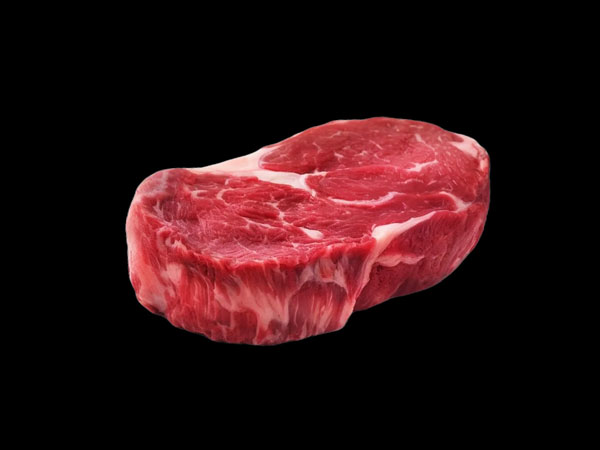Most butchers sell tri-tip as a large roast, but some also offer it as a smaller cut known as a tri-tip steak or newport steak. As a steak, it’s much easier to cook in a pan due to its smaller size. In this article, I’ll break down what makes tri-tip steak special, where it comes from on the cow, the different names it goes by, and the best ways to cook it.
What is Tri-Tip Steak?
Tri-tip steak comes from the bottom sirloin, specifically the triangular-shaped tri-tip roast. It’s a lean, boneless cut with a bold, beefy flavor and a relatively tender texture. The name “tri-tip” comes from its triangular shape. Barbecue and smoking fans love cooking this cut as a whole roast, but some people like it as a steak because it’s easier to grill or pan-sear over high, direct heat.
After cooking, slicing it the right way is crucial. Like skirt, flank, or hanger steak, tri-tip has long muscle fibers, so slicing against the grain shortens them and makes each bite more tender. Slicing it the wrong way results in a tough, chewy texture. The grain runs in different directions, which is easy to spot in a whole roast but much harder to identify in a steak.

What Are the Other Names for Tri-Tip Steak?
Here are the most popular other names for the tri-tip steak in the United States:
- Newport Steak,
- Santa Maria Steak,
- Tri Tip,
- Triangle Steak.
Where Does a Tri-Tip Steak Come From on a Cow?
Tri-tip steak comes from the bottom part of the sirloin, which is part of the loin primal. Butchers cut it from the tri-tip roast.

What Does Tri-Tip Steak Taste Like?
Tri-tip steak has a strong, beefy flavor. It’s a lean cut of steak but still has enough marbling to keep it juicy and flavorful. It’s not as rich or buttery as highly marbled steak cuts (for example, ribeye); it compares more closely to the taste of hanger or flap steak. When smoked, it gets a smoky flavor and turns out more tender. Grilling or pan-searing highlights its beefy taste and creates a delicious crust.
Is Tri-Tip Steak Tender or Tough?
Tri-tip steak is generally moderately tender. However, its tenderness depends on how it’s cooked and sliced. Keep it medium-rare to get the best texture, and never go past medium. Slicing it the right way is just as important. Since the tri-tip has long muscle fibers, slicing with the grain makes it tough and chewy. Instead, always cut against the grain to break up the fibers and make the steak easier to chew and more tender. The same rule applies to flap, hanger, and flank steak.
Because tri-tip doesn’t have much fat or connective tissue, it cooks well as a regular steak. The tricky part? Figuring out which way the grain runs. It’s not always obvious, and getting it wrong can make a big difference in texture. So, cook it right and slice it properly, and you’ll end up with a tender and delicious tri-tip steak.

What Are the Best Methods for Cooking Tri-Tip Steak?
Here are the best cooking methods for tri-tip steak:
- Pan-Searing Only: Pan-searing is the quickest method, giving the tri-tip steak a nice crispy crust on each side in just a few minutes. It’s perfect for thicker cuts, but if you’re not experienced, it’s easy to overcook, especially with thinner steaks.
- Grilling: Grilling adds a smoky, charred flavor, making the tri-tip steak taste great. It’s perfect for people who love that grilled taste.
- Sous Vide: Sous vide gives you total control over the steak’s doneness. You cook the steak slowly in a water bath at a precise temperature, ensuring it’s cooked evenly throughout. Afterward, you sear it shortly to get that tasty crust. It takes longer and requires special equipment, but it’s the best method for beginners.
- Pan-Searing and Oven Finished: You sear the tri-tip steak on the stove for a crispy outer layer, then transfer it to the oven to finish cooking. This method gives you more control over doneness than pan-searing alone.
- Reverse Searing: Involves cooking the tri-tip steak slowly in the oven at a low temperature, then giving it a quick sear in a hot pan. This method ensures the steak is evenly cooked and gets a decent crust, though it takes much longer.






